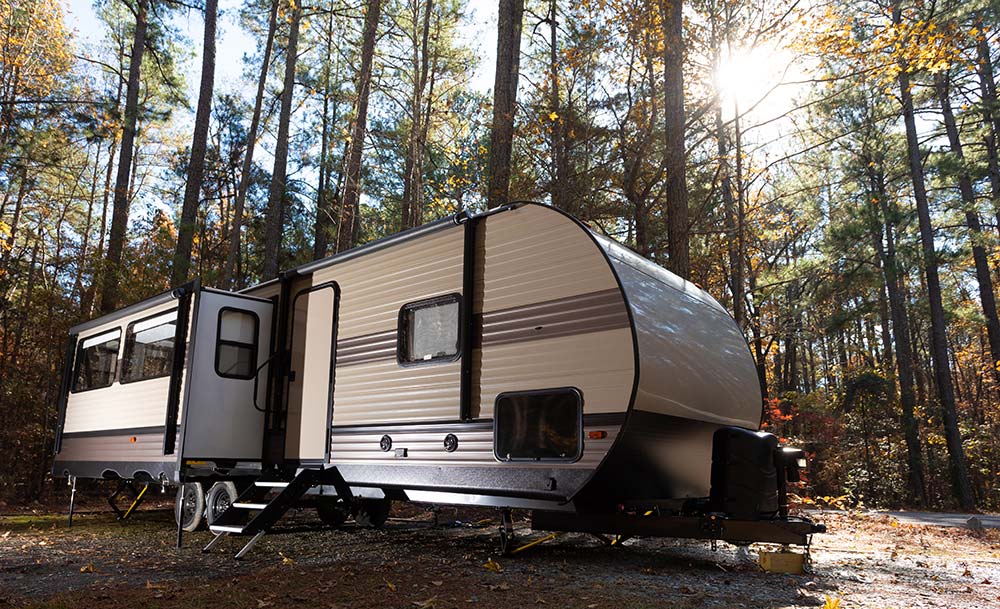Similar to purchasing a furnace to heat a home or business, finding the best mobile home furnace introduces new questions and concerns in the buying process. To ensure that you are purchasing the right furnace for your mobile home, we break down the buying process, from finding the right BTU range to how to install a large unit in a cramped space. This is how to pick the furnace for your mobile home.

Find the Ideal Furnace for Your Home: View Our Products
What is so different about buying a furnace for your mobile home, anyway?
For starters, it's fairly evident that you'll need to select a furnace that will suit a smaller space, meaning that you'll need to find a small unit that will not take up a lot of space in your mobile home, and one that can operate safely, at that. Mobile home furnaces also require unique ductwork and venting that works even harder to keep the occupants of the space safe. Since mobile homes tend to have smaller heat ducts, attempting to install a regular furnace in a mobile home could prove to be dangerous as more hot air moves through the house than can be handled by the ductwork and venting.
Rest assured, though, there are still a few critical parts of the buying process that remain the same.
Though you'll still need to buy a specialty furnace for your mobile home, you'll still be able to choose between a gas, electric, or oil furnace--with a few modifications, of course.
Typically, electric furnaces are the most popular option, as gas furnaces usually don't work well in a mobile home, since the ductwork and venting are much smaller.
To assess what kind of heating system you'll need for your mobile home, you'll need first to ask yourself a few essential questions:
- What do you have now?
- What's your fuel source? (Electric, natural gas, propane, or oil).
- Do you have central heating or cooling only?
- What are the tonnage and BTU requirements for your mobile home?
- Did your former system perform well enough to make you feel comfortable?
Typically, you can find most of this information printed on your old unit.
If you are dissatisfied with your current system and are looking to replace it with something completely brand new, there are few more questions that you should be asking yourself throughout the buying process:
Do you only want heat, or do you want to try central air? Do you have enough room to equip your space with a split system? Does your mobile home have ductwork, or is it ductless?
If you live in a part of the country or world that experiences all four seasons, it might be smarter to install central air, as you'll save on installation and equipment costs by getting it all done at once. You could invest in a heat pump that provides both heating and cooling services. Before purchasing a heat pump, however, ensure that you buy one that is suited for a mobile home. Typically, mobile home HVAC systems either come with a packaged unit or a split system. The packaged unit will contain all of the cooling and heating elements in one big unit that will sit on the ground outside or the roof. If your mobile home has a split system, the heat pump or AC condenser will be outside while the air handler and furnace remain inside.
For added convenience, most mobile homes already come equipped with the ductwork that allows for both heating and cooling processes. If your mobile home is newer or does not come with ductwork of any kind, you'll likely be looking to put in a mini-split system.
What brands sell mobile home-friendly furnaces?
At this point, the following brands (along with many others not mentioned) offer mobile home-friendly furnaces:
- Axeman Anderson
- Bryant
- Coleman
- Evcon
- Goodman
- Intertherm
- Miller
- MRCOOL
- Nordyne
At the end of the day, though, your most significant takeaway should be this: to purchase the right furnace for your home, you'll need to check the exact heating and cooling specifications for your particular mobile home. From there, using the square footage, type of fuel used, and size of ductwork and venting, you'll finally be able to decide on your mobile home unit.










